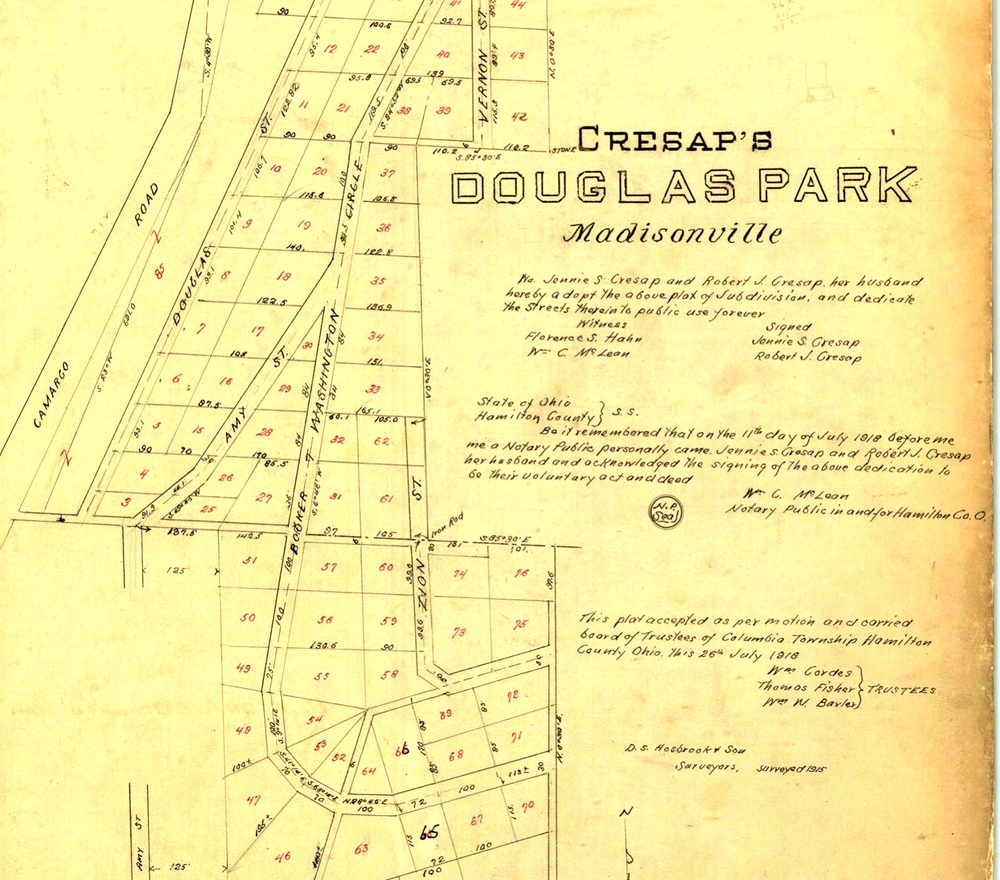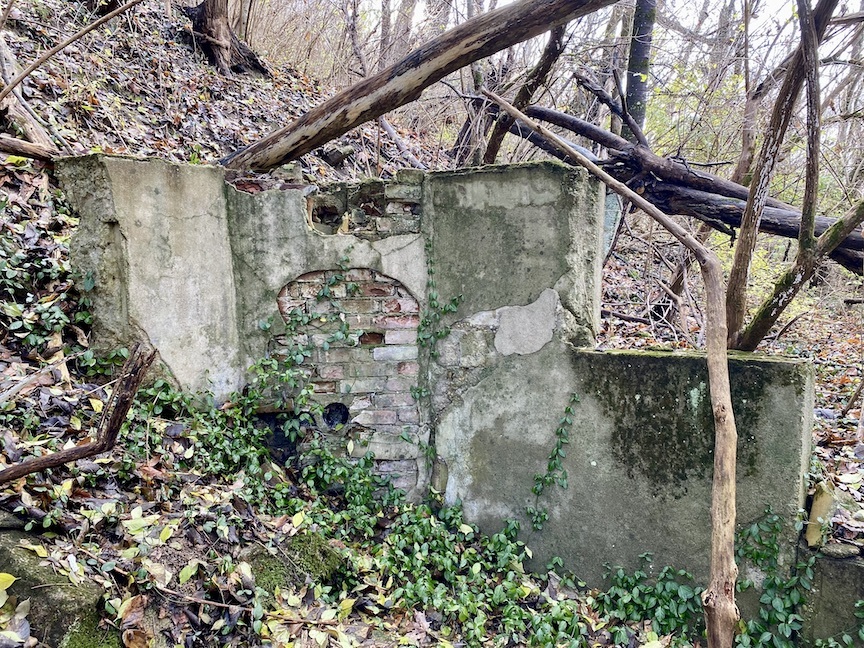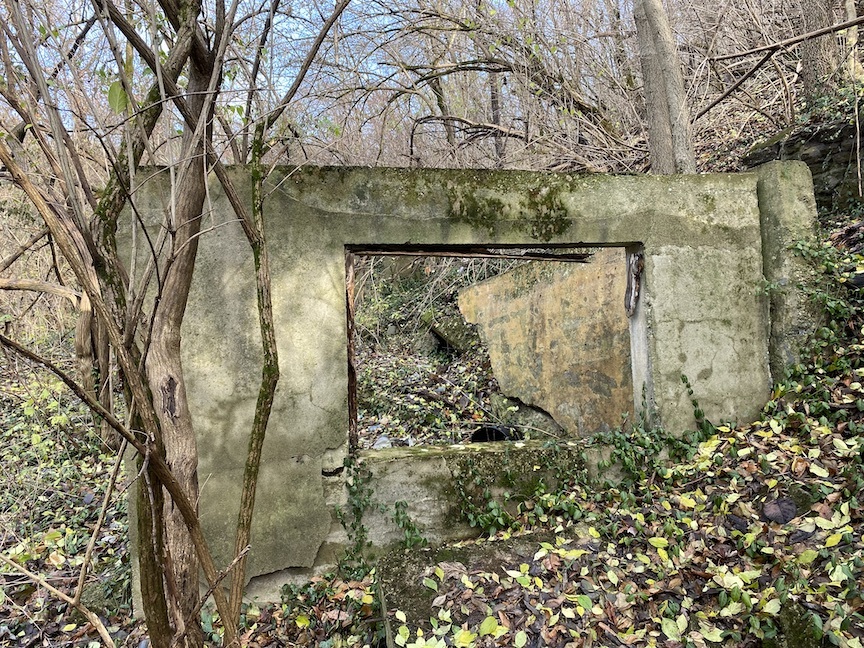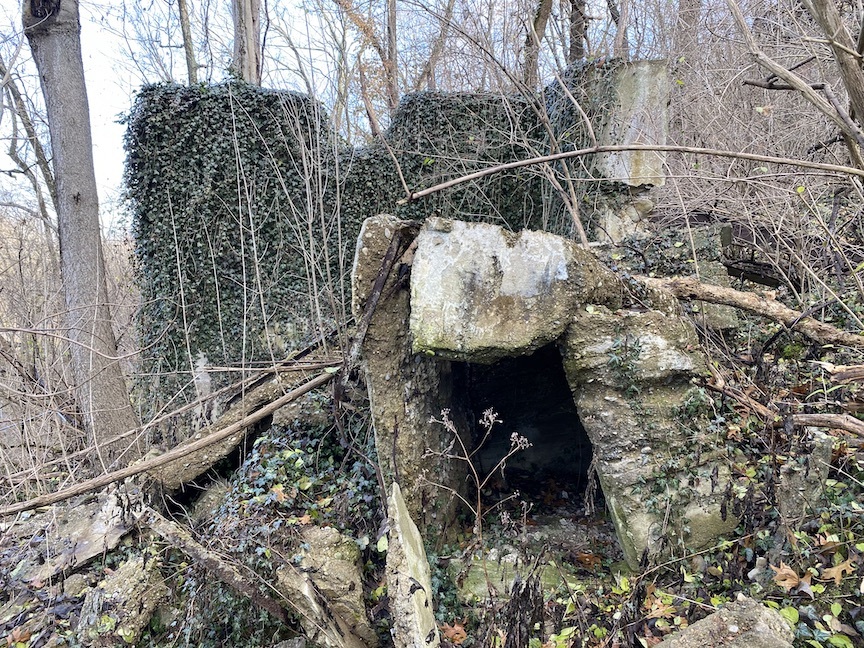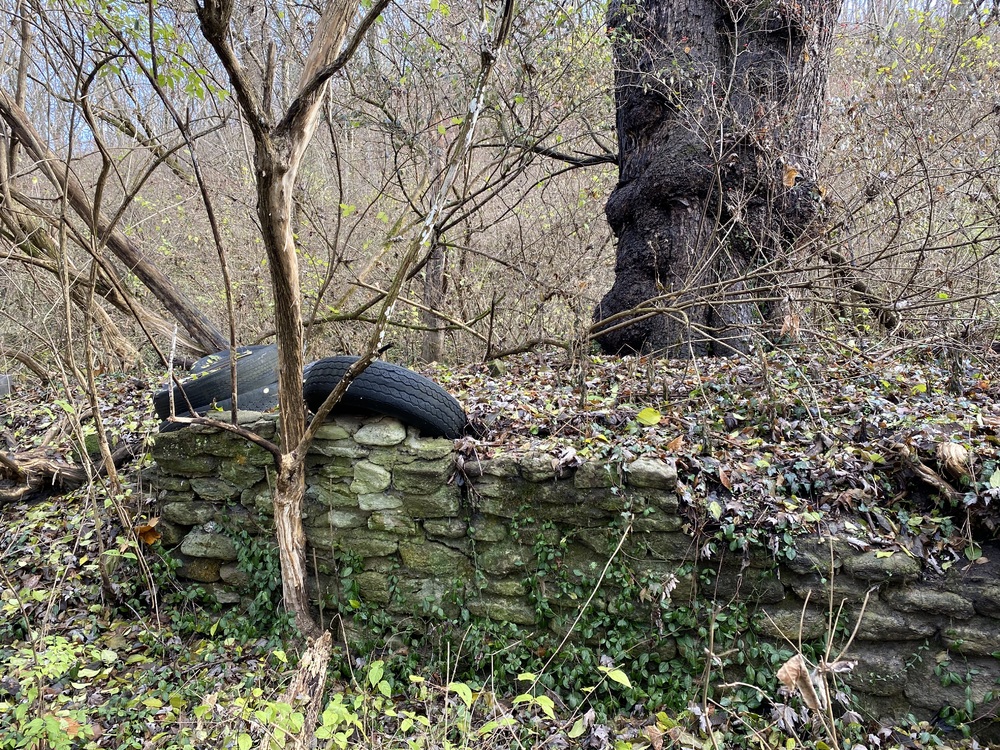
To get to Amy Avenue, you drive to the eastern edge of Madisonville, to 6835 East Fork Avenue. Then look north. A street sign saying “Amy Avenue” is still in place. There’s a chain across the old road, and a “no trespassing” sign.
The roadbed climbs steeply north through the woods. On both sides, occasionally visible among the honeysuckle, there are low retaining walls, steps, and house foundations.
The southern portion of Amy Avenue – the first 800 feet or so, running north from East Fork Avenue – is an older road. The northern section, beginning where it turns slightly to the northeast, was the only realized portion of Douglass Park, a subdivision planned in 1912 “for the exclusive use of colored people.”
Douglass Park was the creation of Robert J. Cresap, a white real estate developer who lived in Madisonville. The subdivision was named for Frederick Douglass. If it had been completed, its main street would have been Booker T. Washington Circle.
Amy Avenue was built without water or sewer lines under the street. The residents had outhouses. Drinking water came from wells. Street utilities can be added later, of course – something that has happened in many formerly rural areas – but some municipality has to want to add them. And that was the problem: nobody wanted Amy Avenue. When the City of Cincinnati annexed Madisonville in 1911, they did not annex anything west of Camargo Road. And when the Village of Indian Hill was planned, officials purposefully left Amy Avenue outside their boundaries.
Over the years, residents of Amy Avenue repeatedly asked the Cincinnati City Council to annex their subdivision or at least to formally “dedicate” their street, to make it eligible for city utility lines and street repairs. But the city refused.
Since there was no water line in the street, there were also no fire hydrants, at least none closer than East Fork Avenue. If a fire broke out on Amy Avenue, a fire company might have to string together hoses for upwards of two thousand feet to get water to the fire. The alternative, of course, was to use a pumper truck, but Amy Avenue was so steep and poorly paved that getting a pumper truck to the end of it was difficult.
Worse, it wasn’t completely clear which fire company should respond to an alarm. On February 7, 1950, fire broke out in the Amy Avenue home of Katherine Willis. Someone telephoned the police dispatcher for Hamilton County. The dispatcher, Roy Bell, made a number of calls, but fire departments from Silverton, Madison Place, and Indian Hill all refused to respond, telling Bell that the area was “outside our jurisdiction.”
Several companies from the Cincinnati Fire Department did respond to the fire, but by the time they arrived, the nine-room house had been destroyed. Over the next few years, Amy Avenue suffered numerous, devastating house fires.
Officials of Columbia Township eventually created a fire district called the East Fork Fire District, comprising Amy Avenue plus a few blocks of nearby streets. The township trustees told the residents that they would have to organize a volunteer fire department, but the township would give them a fire truck and other equipment.
A volunteer fire department was organized but eventually disbanded. In 1957, a reporter from the Cincinnati Post visited Amy Avenue to ask what had happened. William Taylor, president of the Madisonville Civic League, showed the reporter the fire truck that they had received: “It is a converted light truck, seven years old. It carries only 25 to 50 gallons of water. Its hose is rotten. Its chemical tanks are empty. And it just can’t climb some of those hills.”
Another local resident, Ernest Davidson, chimed in: “They just don’t realize how bad the equipment really is. There is no ax, no ladder, and there are not even wrenches with which to fit the hoses together…. This equipment is the main reason the old volunteer fire department dissolved. ... If the township provided us some decent equipment, we’d have an excellent fire department.”
Sometime in the 1960’s, the Village of Indian Hill began purchasing property on Amy Avenue and tearing the houses down. Indian Hill officials hoped to consolidate a large parcel and then trade it to the City of Cincinnati in exchange for some city property that Indian Hill wanted. But city officials balked at the proposed trade.
By 1971, many of the houses on Amy Avenue were gone. But there were still some residents who refused to sell. Indian Hill village manager Alpheus White complained that the holdout residents had “jacked up prices to unrealistic levels.” As a result, White, said, he doubted “that any further purchases will be made in that area by the village.”
In a 1975 study, the Cincinnati Planning Commission recommended that the City should “Vacate Amy Avenue as relocation opportunities, beneficial to existing residents, become available.” The last houses were condemned. Fire officials, so frequently absent in the history of Amy Avenue, appeared to conduct controlled burns of the remaining structures. That was the end of Any Avenue, and the end of Douglass Park.
Images

